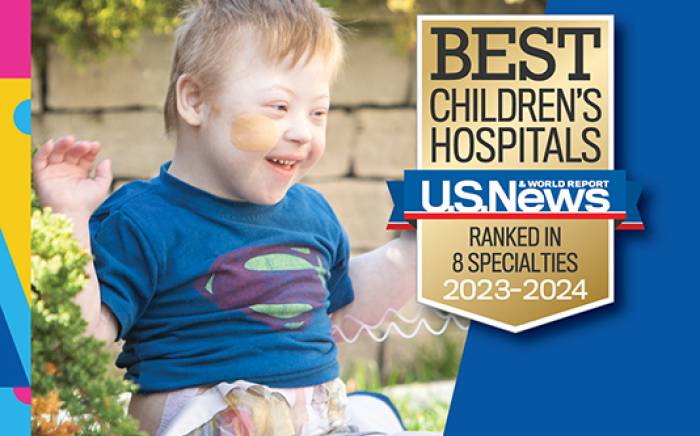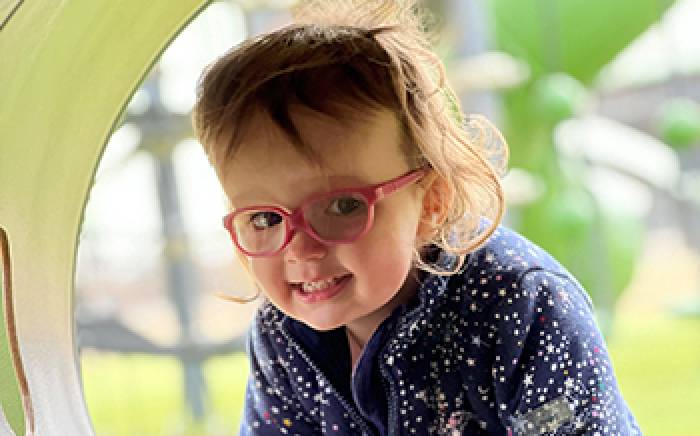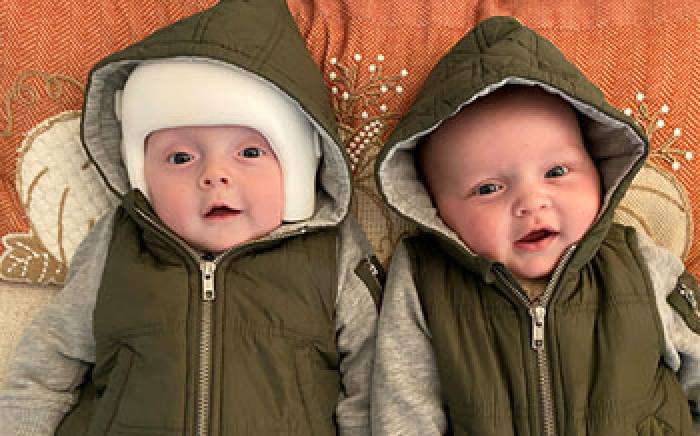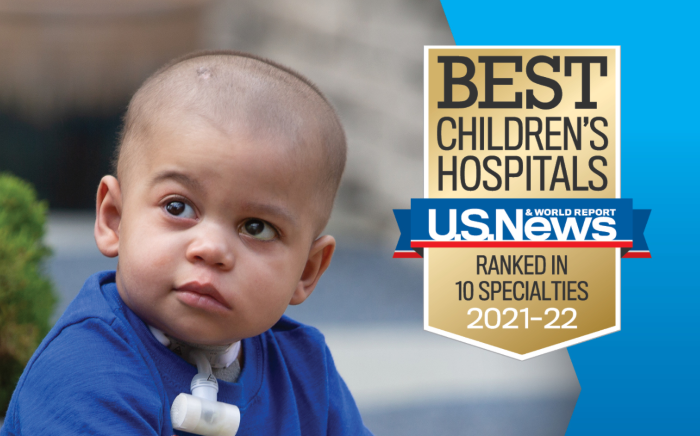Peter Needham’s recovery from head trauma has created a yearly family tradition.
 No parent wants to spend the night in the emergency room worrying about their child. But on Christmas Eve 2015, Emily and Tim Needham found themselves in that situation when their 6-month-old, Peter, hit his head.
No parent wants to spend the night in the emergency room worrying about their child. But on Christmas Eve 2015, Emily and Tim Needham found themselves in that situation when their 6-month-old, Peter, hit his head.
“I was getting the boys ready for church,” Emily recalls. “Peter’s older brother, Caleb, needed help getting dressed, so I set Peter down on the bed.”
Peter fell and hit his head on the hardwood floor, but after some tears he seemed to recover. A half-hour later, Peter vomited, and his family rushed him to a local emergency room fearing that he may have a concussion. Instead, a CT scan showed that Peter sustained a skull fracture and bleeding between the inner side of his skull and outer membrane of his brain. Peter was transferred to St. Louis Children’s Hospital for immediate care at one of the nation’s top ranked pediatric neurosurgical programs.
How to Save A Life
Tim and Emily met David Limbrick, MD, PhD, chief of pediatric neurosurgery at Washington University and neurosurgeon in chief at St. Louis Children’s Hospital.
“Peter’s hemoglobin kept falling, meaning blood was filling around his brain,” Dr. Limbrick says. “Immediate surgery was necessary to stop the bleeding and save Peter’s life.”
The Needhams recall having to sign papers for Peter’s surgery, warning them of the risk of Peter not surviving.
“My younger brother passed away years ago, and I know the impact that kind of loss has on a family,” Tim says. “We were so scared it was going to happen to us.”
“The details are fuzzy,” Emily admits, “but I remember telling them, ‘Take care of our baby boy.’”
Peter arrived at St. Louis Children’s Hospital at 10:45 p.m., and by 1:15 a.m. his operation was complete. Dr. Limbrick states that a minute longer could have meant the difference between life and death.
“I think that’s what made Peter’s case a miracle,” Dr. Limbrick says. “Everyone mobilized so fast to help him, and I think it saved his life.”
A New Family Tradition
Emily, Tim and Caleb, along with Peter’s grandparents and some close family friends, celebrated Christmas on the neurology floor that year. Peter was able to return home before New Year’s Day.
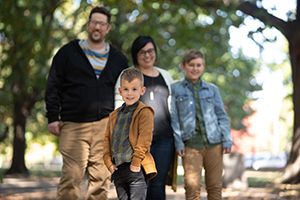 “The love and support of a family can define a patient’s recovery,” Dr. Limbrick says. “With his family’s support, Peter sailed through his without complications.”
“The love and support of a family can define a patient’s recovery,” Dr. Limbrick says. “With his family’s support, Peter sailed through his without complications.”
The next Christmas, Peter was scheduled for his one-year checkup, and thus began a new tradition: Each year, the family visits the St. Louis Children’s neurosurgery department bearing gifts and gratitude.
“We could never truly express our thanks for what the hospital staff did that night,” Emily says. “We feel linked to them forever. It doesn’t feel like Christmas until we revisit that part of our story.”
“I don’t know if the family understands how special their visits are for me as well,” Dr. Limbrick says. “I’m not sure I can verbalize how much their gratitude means to me, and how wonderful it is to see Peter grow up more every year.”
Peter is 5 years old now, “a little man,” as Dr. Limbrick calls him. He loves his older brother, playing hockey and superheroes. He even gets his hair cut like his favorite hammer-wielding Norse deity, a choice his parents are happy to support.
“Peter’s got a horseshoe-shaped scar from the top of his ear to his hairline,” Emily says. “When he wears his hair short, we get to see that scar. It’s a beautiful reminder that our baby boy is here with us.”




